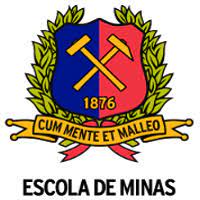No Brasil, os depósitos minerais e as cavidades naturais subterrâneas são consideradas como bens da União e como tal são reguladas por leis específicas. As cavidades naturais subterrâneas classificadas como relevância máxima, não podem ser objeto de impactos negativos irreversíveis e devem ser preservadas. Na mineração, a geração de ondas sísmicas induzida por explosivos para desmontes de rochas, sem dúvida, é um ponto de grande atenção, visando garantir a integridade física de uma cavidade. Entretanto, os trabalhos desenvolvidos em litotipos ferruginosos para mecânica das rochas ainda são recentes, prevalecendo estudos de dinâmica hídrica e das vibrações sísmicas. O objetivo desta dissertação foi elaborar o modelo geomecânico dos maciços que constituem a cavidade BRU_0005, utilizando o Sistema RMR de Bieniawski adaptado pela Vale, correlacionado com o Índice de Resistência Geológica – GSI e, assim, definir os pontos da cavidade mais suscetíveis a desplacamentos para instrumentação e monitoramento. Os resultados com RMR e GSI, obtidos com as mesmas classes de maciço, confirmaram a eficácia do método adaptado. No geral, a cavidade estudada é constituída por maciço de boa resistência, porém, três regiões apresentaram-se mais frágeis e devendo ser instrumentada e monitorada.
In Brazil, mineral deposits and caves are considered the national treasure of State and as such are regulated by specific laws. The most important caves can´t be subjected to irreversible negative impacts and must be preserved. In mining, the generation of explosive-induced seismic waves for rock stripping is undoubtedly a point of great attention in order to guarantee the physical integrity of a cavity. However, the work developed in ferruginous lithotypes for rock mechanics is still recent, with studies of water dynamics and seismic vibrations. The objective of this dissertation was to elaborate the geomechanical model of the masses that constitute the cavity BRU_0005, using the RMR system of Bieniawski adapted by Vale, correlated with the Index of Geological Resistance – GSI and, thus, to define the points of the cavity more susceptible to displacements for Instrumentation and monitoring. The results with RMR and GSI, obtained with the same mass classes, confirmed the effectiveness of the adapted method. In general, the studied cavity is constituted by a mass of good resistance, however, three regions were more fragile and should be instrumented and monitored.

